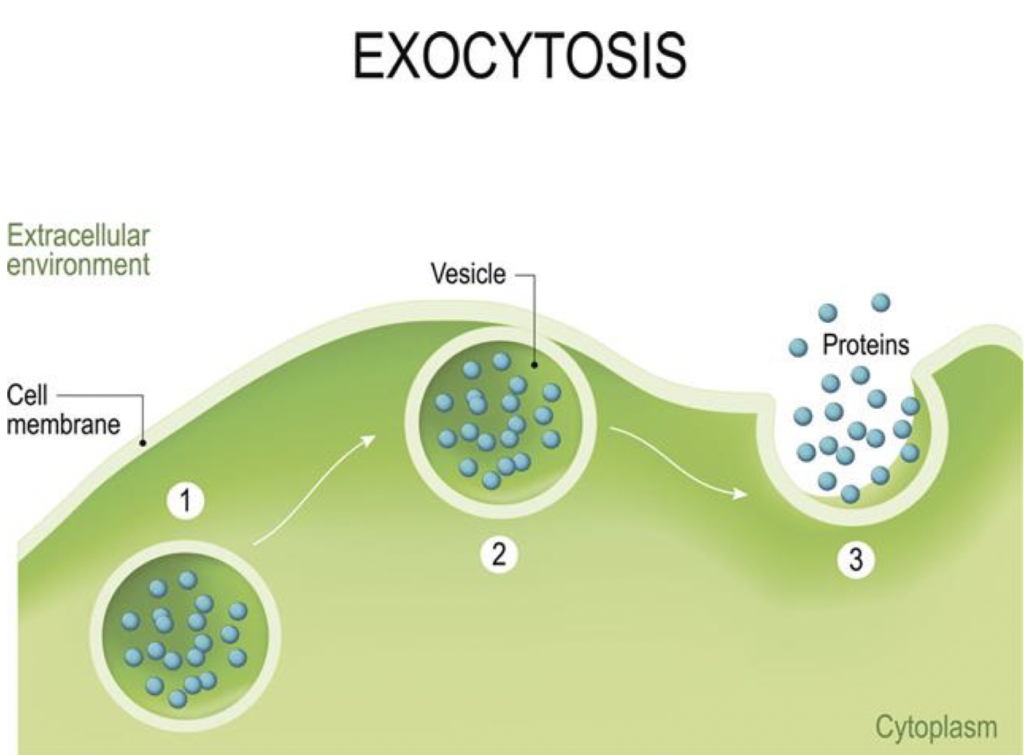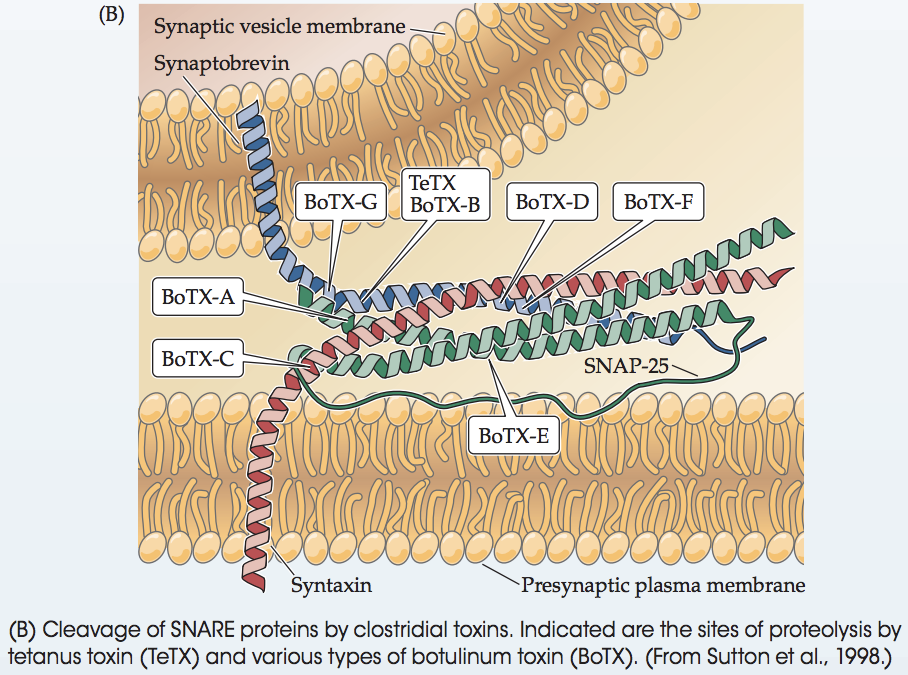Contents
BACKGROUND/INTRO
If you think back to 10th-grade biology, you probably remember learning that the mitochondria are the powerhouses of the cell and not much else. If you wrack your memory a bit more, you may remember that the vesicle is the organelle responsible for secreting proteins.
In the nerves innervating muscles, vesicles contain/release unique proteins called neurotransmitters; and these neurotransmitters enable nerve-muscle communication.
Due to the vesicle’s role in helping muscles communicate, it may be natural to wonder whether preventing neurotransmitter release could “relax” overactive muscles.
Botulinum neurotoxin
Botulinum neurotoxin (BOTOX) is a family of bacterial protein toxins that cause paralysis by inactivating neurotransmitter release at nerve terminals of the peripheral nervous system. Specifically, it blocks acetylcholine release from peripheral nerve terminals and therefore leads to cessation of somatic motor and/or parasympathetic transmission. In doing so, BOTOX is the most potent toxin known thanks to the marvel of its protein design, which underlines its mechanism of action.
In minute quantities, their unique properties have led them to become highly effective therapeutic agents for treating a variety of human syndromes.
“All things are poisons, for there is nothing without poisonous qualities. It is only the dose which makes a thing poison.” ― Paracelsus
The dose of Botox recommended for the treatment of wrinkles is 100x less than the LD50 (the dose lethal to half of adults). Moreover, it is unlikely to lead to an immune response because it is not expected to be present in the blood in measurable quantities following proper placement of the toxin at the recommended doses.
Now let’s get more into the “how.”
BoNTs are the most lethal toxins. Their high toxicity is due to a multi-step molecular mechanism: they target peripheral nerve terminals by a unique mode of binding and enter into their cytosol to cleave SNARE proteins, thus inhibiting the exocytosis/release of neurotransmitters. The specificity and speed of binding make BOTOX a valuable pharmaceutical. SPecifically, BOTOX can treat neurological and non-neurological diseases characterized by hyperactive cholinergic nerve cells.
HOW DO WE PREVENT NT RELEASE
Vesicles can fuse with the plasma membrane when they want to release their contents outside the boundaries of the cell.
In 10th grade

Well, for stage 2 to occur, the vesicle envelope uses a nifty protein (called SNARE) to fuse with the cell envelope (aka the cell membrane. Usually, this goes as planned, and neurotransmitters are quickly released.
However, when BOTOX is present, it cuts up the SNARE protein and messes with vesicle fusion and neurotransmitter release.
The scientific difference between the various types of botulinum toxins is the cut sites. So while Dysport®/Xeomin®/Botox® is botulinum toxin type A, Myobloc®/NeuroBloc® is a botulinum toxin type B (BoNT-B).

Fun Fact to end with
Like botulinum toxins, tetanus toxins are proteases inhibit neurotransmitter release by cleaving the SNARE proteins involved in the fusion of synaptic vesicles with the presynaptic plasma membrane (see Figure B and stage 2).
Sources
Gart, M. S. and K. A. Gutowski (2016) Overview of botulinum toxins for aesthetic uses. Clin. Plast. Surg. 43: 459–471
Humeau, Y., F. Doussau, N. J. Grant and B. Poulain (2000) How botulinum and tetanus neurotoxins block neurotransmitter release. Biochimie 82: 427–446.
Jabbari, B. (2020). Botulinum Toxin Treatment in Surgery, Dentistry, and Veterinary Medicine (1st ed. 2020). Springer International Publishing : Imprint: Springer.
Purves, D. (2012). Neuroscience (5th ed). Sinauer Associates.
